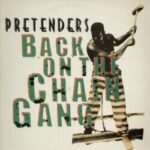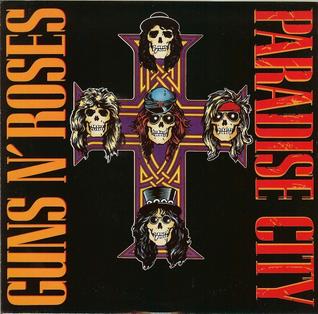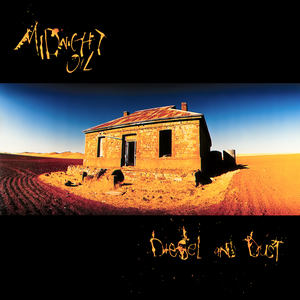 There’s a certain melancholy beauty in Back in the Chain Gang that captures both the aching heart of grief and the unbreakable pulse of survival. When The Pretenders released the song in 1982, it wasn’t just another new wave single for radio rotation—it was a cathartic outpouring from a band grappling with death, turmoil, and transition. Frontwoman Chrissie Hynde, always fierce and sharp-edged, found herself in the most vulnerable position of her career: mourning the loss of her guitarist and ex-lover James Honeyman-Scott, who had died suddenly of a drug overdose. Rather than retreat, she poured her anguish into one of the most emotionally resonant songs of the decade—a record that would define both the band’s evolution and Hynde’s identity as an artist of rare honesty.
There’s a certain melancholy beauty in Back in the Chain Gang that captures both the aching heart of grief and the unbreakable pulse of survival. When The Pretenders released the song in 1982, it wasn’t just another new wave single for radio rotation—it was a cathartic outpouring from a band grappling with death, turmoil, and transition. Frontwoman Chrissie Hynde, always fierce and sharp-edged, found herself in the most vulnerable position of her career: mourning the loss of her guitarist and ex-lover James Honeyman-Scott, who had died suddenly of a drug overdose. Rather than retreat, she poured her anguish into one of the most emotionally resonant songs of the decade—a record that would define both the band’s evolution and Hynde’s identity as an artist of rare honesty.
Back in the Chain Gang became a song about starting over when everything has fallen apart. It’s not just about grief; it’s about persistence—the kind that defines every working-class hero, every heartbroken lover, every person who’s been knocked down but still gets up. Its themes of loss, disillusionment, and rebuilding resonate as much today as they did more than forty years ago. For a band that had already found success with hits like Brass in Pocket and Message of Love, this single was both a eulogy and a rebirth, a moment that cemented The Pretenders’ place as one of rock’s most human voices.
The Song That Rebuilt a Band
By the time Back in the Chain Gang was recorded, The Pretenders were barely holding together. Following Honeyman-Scott’s tragic death in June 1982—and the earlier firing and overdose death of bassist Pete Farndon—Chrissie Hynde was effectively the last remaining original member. The Pretenders, as the world knew them, were gone. But instead of dissolving, Hynde assembled a new lineup and went into the studio to record a song that was part tribute, part therapy.
Recorded in July 1982 and released later that year, Back in the Chain Gang became a symbol of endurance. The title itself evokes labor and punishment—the “chain gang” of convicts working under the hot sun, bound together in hardship. But Hynde cleverly twists the metaphor: her “chain gang” is the grind of life, the endless struggle to keep moving forward despite heartbreak. There’s pain in her voice, but also strength. Every line carries that dual weight of mourning and defiance.
The song reached No. 5 on the Billboard Hot 100, becoming the band’s biggest U.S. hit at the time. It would later appear on their 1984 album Learning to Crawl, an album that served as both a memorial and a fresh start, marking the official rebirth of The Pretenders.
The Sound of Strength and Sorrow
Musically, Back in the Chain Gang is deceptively simple. It opens with that unmistakable clank-clank rhythm—a sonic imitation of the sound of a work crew hammering steel. That percussive loop immediately sets the mood: a mixture of toil and time passing, a metaphor for rebuilding something that’s been destroyed.
The guitar work, provided by Billy Bremner and Robbie McIntosh, has a crisp, chiming quality—bright but wistful. It’s melodic without being sentimental, echoing Hynde’s tone: emotional, but never indulgent. The rhythm section provides a steady, trudging beat, grounding the song in that sense of resilience. And then there’s Hynde’s voice—raspy, soulful, but laced with a kind of quiet control that makes every word hit harder.
The chorus—“I found a picture of you, oh-oh-oh / Those were the happiest days of my life”—is one of rock’s great expressions of nostalgia. It’s not just a memory of love; it’s a realization that those moments are gone, that you can’t ever truly return to them. But rather than collapse under that truth, Hynde keeps going: “Back on the chain gang.” It’s the anthem of someone who’s been crushed by loss but refuses to surrender.
The Lyrics: Grief and Grace Intertwined
Every verse of Back in the Chain Gang feels like a page from Hynde’s emotional diary. It’s deeply personal, yet written with a universal touch that allows anyone to see their own story in it.
“I found a picture of you
Those were the happiest days of my life
Like a break in the battle was your part
In the wretched life of a lonely heart.”
These lines are pure Hynde: poetic without pretension, simple but searing. She captures the way grief sneaks up on you through small, everyday triggers—a photograph, a flash of memory, a song on the radio. The battle she refers to isn’t just the loss of Honeyman-Scott—it’s the fight to keep her band alive, to keep herself from breaking.
Then comes that haunting refrain:
“We’re back on the chain gang.”
It’s repetition as resilience. Every return to that phrase feels like another swing of the hammer—work, grief, life, all blending into one rhythm.
Later verses extend the metaphor, invoking the “powers that be” and the “comfort to the enemy,” turning the song outward. It’s not just about personal pain—it’s also about societal systems, the way we all get trapped in cycles of struggle, love, and loss. Hynde was always politically conscious, and her lyrics here blend the personal with the political seamlessly.
A Tribute to James Honeyman-Scott
While Back in the Chain Gang can be read broadly, it’s also a deeply specific tribute to James Honeyman-Scott, the band’s guitarist whose crisp tone and inventive style had defined The Pretenders’ sound. His death was a shock that nearly ended the band altogether.
The recording of the song became a kind of vigil. Hynde, visibly pregnant at the time with Ray Davies’ child, channeled her grief into her performance. Her delivery is raw but restrained, as if she’s keeping her emotions just barely in check. The result is one of the most moving vocals of her career.
In interviews years later, Hynde would confirm that the song was indeed about James, though she allowed its meaning to grow beyond that. She once said that she wanted to write something “to make him proud.” The success of Back in the Chain Gang did exactly that—it honored his memory while proving that she could continue without him.
From Pain to Power: The Pretenders’ Rebirth
When Learning to Crawl was released in 1984, it marked the rebirth of The Pretenders. The album included Back in the Chain Gang, along with other emotional touchstones like 2000 Miles and My City Was Gone. Each song captured a different facet of Hynde’s journey through grief, responsibility, and renewal.
The new lineup—with Robbie McIntosh on guitar, Malcolm Foster on bass, and Martin Chambers still behind the drums—felt like a band forged from loss. Back in the Chain Gang set the emotional tone for everything that followed.
Critics hailed the song as one of the finest of the era, often comparing it to the emotional honesty of early Springsteen or the melodic clarity of the best British new wave. Yet Hynde stood apart: she wasn’t trying to sound like anyone else. Her songwriting was rooted in punk realism, filtered through the lens of classic pop craftsmanship.
Cultural Impact and Lasting Legacy
Over four decades later, Back in the Chain Gang still stands as one of rock’s most affecting reflections on loss and perseverance. It’s been covered and referenced by countless artists, from Morrissey—who released his own version in 2018—to indie and alternative acts who’ve cited it as an emotional touchstone.
Its themes continue to resonate across generations. Whether you’ve lost a loved one, gone through heartbreak, or just found yourself starting over after failure, Hynde’s lyrics strike a chord. There’s something timeless about her combination of toughness and tenderness—a mix few songwriters have ever balanced so well.
The song also cemented The Pretenders’ reputation as more than just a new wave band. They weren’t chasing trends—they were crafting deeply human rock music that defied categories. While many bands from that era faded or fragmented, The Pretenders endured, largely thanks to Hynde’s unshakable sense of purpose. Back in the Chain Gang became a defining statement of that endurance.
The Soundtrack to Working Through Pain
There’s a reason Back in the Chain Gang continues to appear in films, television shows, and playlists dedicated to “songs that heal.” It’s not about wallowing—it’s about doing the work of moving on. Hynde doesn’t glorify pain; she transforms it into motion. That’s what makes the “chain gang” metaphor so powerful—it’s labor, it’s rhythm, it’s life continuing despite everything.
You can almost hear the hammering in your own heartbeat. The guitar line sparkles with hope while the percussion grinds like the weight of the world. And through it all, Hynde’s voice serves as both narrator and survivor. When she sings “We’re back on the chain gang,” she’s not just repeating a lyric—she’s reclaiming her agency, rebuilding her life, reasserting her voice in a male-dominated industry that expected her to crumble.
Why It Still Matters Today
Songs about grief often age into nostalgia. But Back in the Chain Gang remains current because it’s not confined to any one era or emotion. It’s about persistence, and persistence never goes out of style.
In an age where personal loss is often shared instantly online, the song’s quiet dignity feels almost revolutionary. Hynde doesn’t overshare; she crafts something artful, contained, and infinitely relatable. The restraint gives it more power—it feels real, not performative.
You can hear its echoes in artists from Alanis Morissette to Florence Welch—women who turned their pain into art without apology. It also continues to inspire male artists like Brandon Flowers of The Killers, who’s cited Hynde’s balance of grit and melody as a major influence.
For every listener who’s ever been “back on the chain gang,” the song remains a reminder that rebuilding doesn’t mean forgetting—it means carrying your past with pride, using it as the raw material for strength.
Conclusion: A Timeless Anthem of Survival
When Back in the Chain Gang hit the airwaves in 1982, it sounded both mournful and defiant—a song born from tragedy that somehow glowed with hope. Decades later, its message still rings true: life keeps demanding work from us, even when we’re broken. And through that work, through that rhythm, we find our way back.
For Chrissie Hynde, it was a turning point. She had lost her friends, her bandmates, and her partner, but she refused to give up. Instead, she turned her grief into art that transcended pain. Back in the Chain Gang became not just a memorial, but a mantra—a declaration that even when life shatters your foundation, you can rebuild, one strike of the hammer at a time.
“We’re back on the chain gang.”
It’s not a lament. It’s a vow. It’s Hynde saying: I’m still here. I’m still working. I’m still singing. And I’m not done yet.


